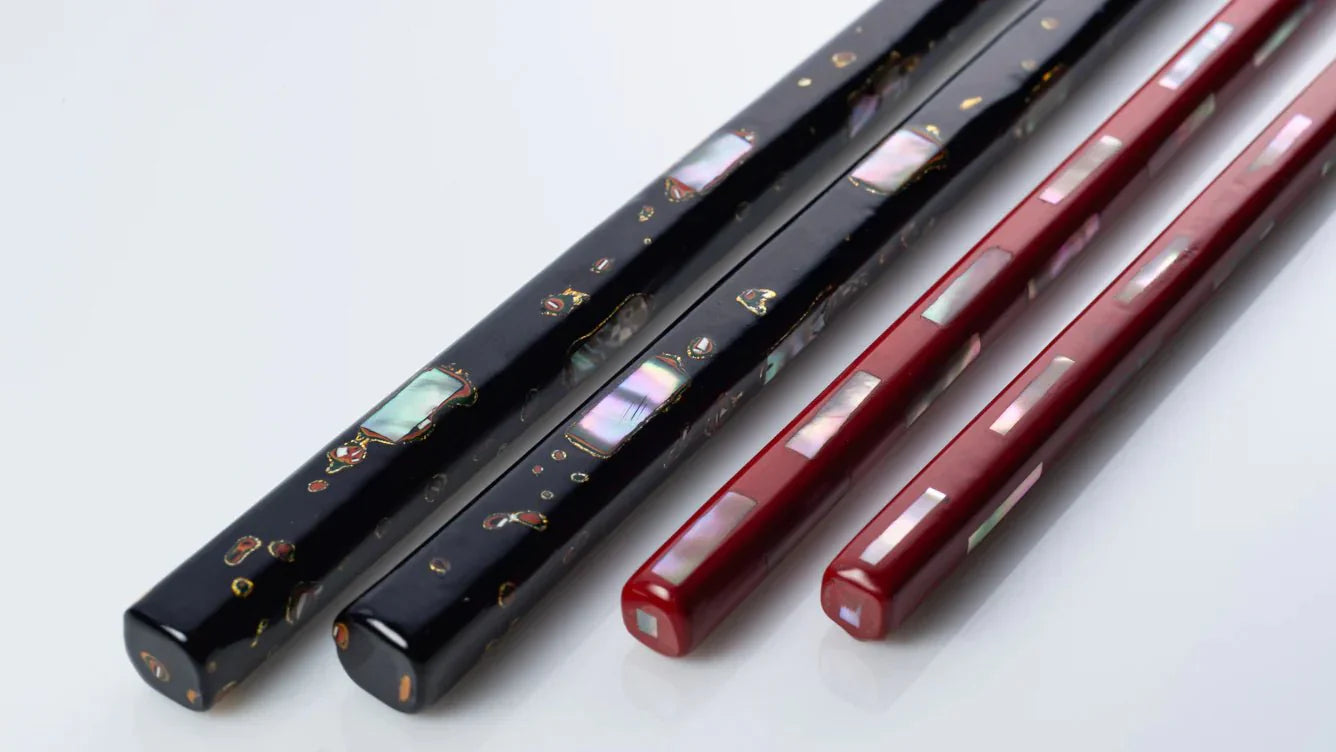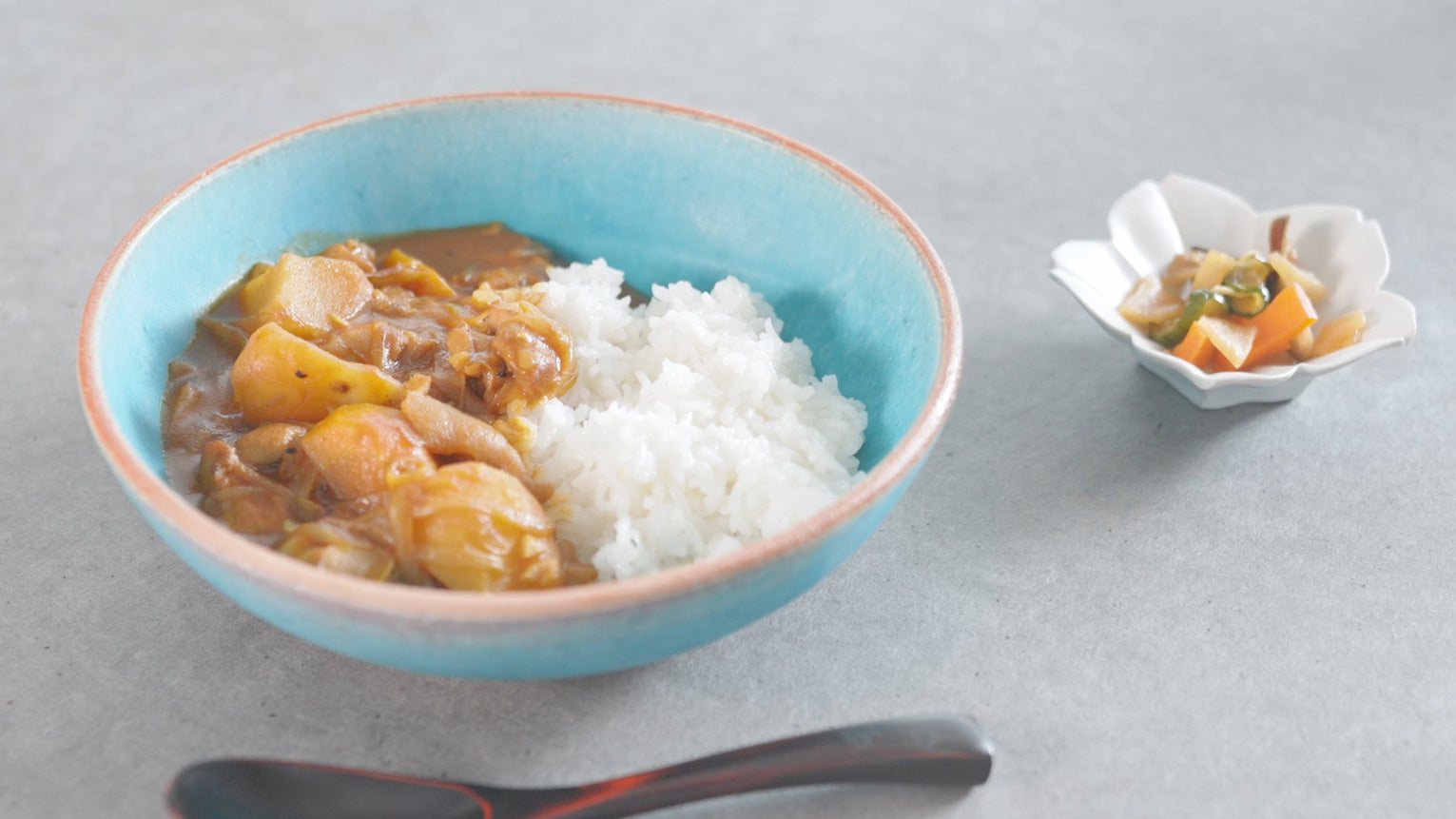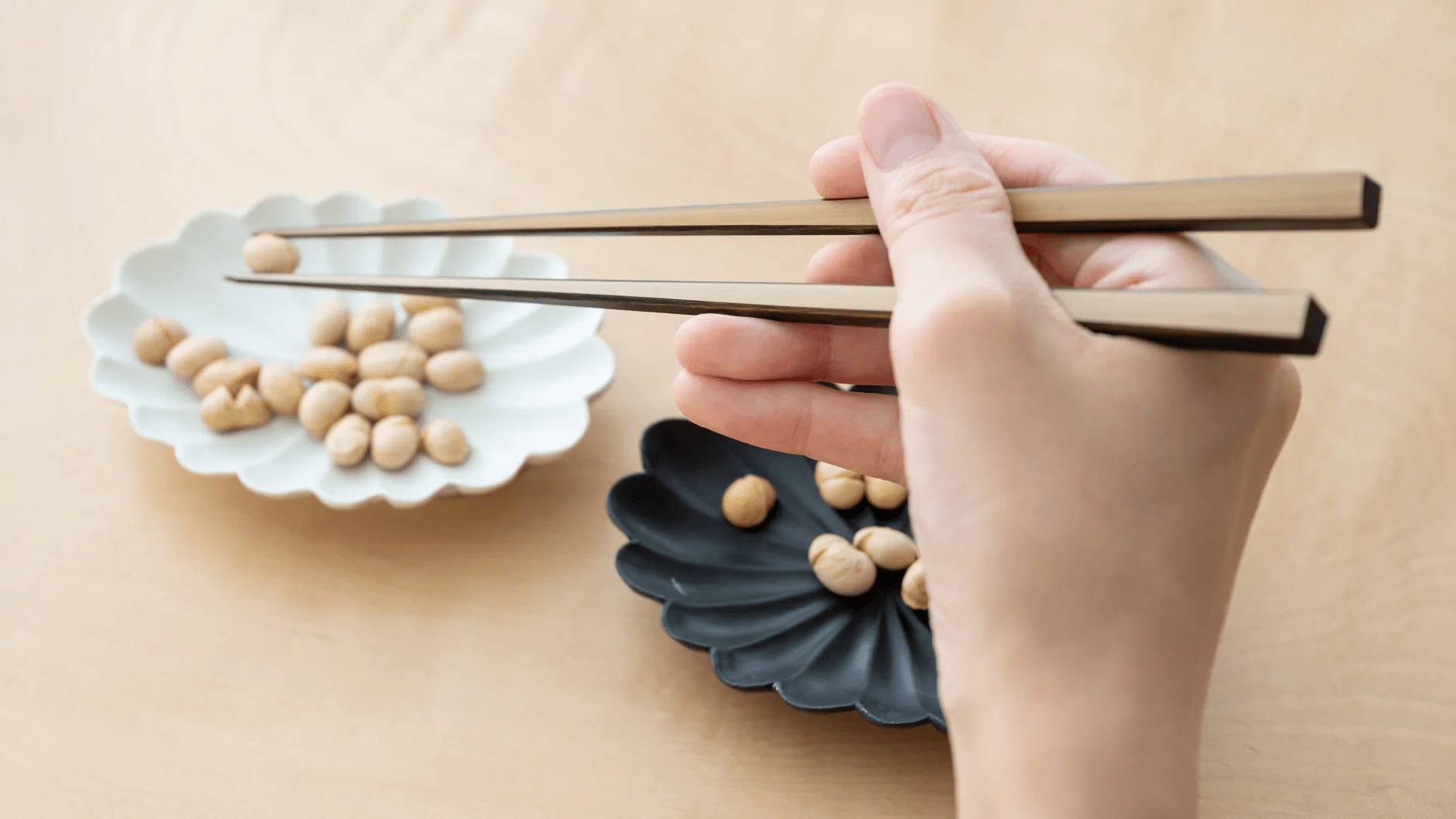
The Intricate Artistry of Raden, Mother-of-Pearl Inlays
Written by Team MUSUBI
In the artistic world of Japanese craftsmanship, few techniques are as mesmerizing as raden. This method embeds mother-of-pearl into lacquerware, displaying artisan precision and luxurious, light-reflective sparkle. The result is a timeless elegance, a testament to the meticulous effort that goes into every single piece.
This article dives into the depths of this ancient craft, exploring its journey from the shores of East Asia to the hands of Wakasa lacquerware artisans like Furui Masahiro, who uphold centuries of tradition with every shimmering, handcrafted piece. From the revered halls of Japan's imperial court to the precise, artistic expressions in modern chopsticks and tea canisters, raden's legacy endures, captivating with its intricate beauty and the profound dedication of its craftspeople. Join us as we unfurl the history, technique, and contemporary grace of this exquisite craft, and how it continues to leave an indelible mark on the world of fine artistry.
tables of contents
The Journey of Raden in East Asian Art

Japan's encounter with raden's intricate allure followed shortly after. During the Nara period (714 CE-794 CE), Japanese envoys dispatched to Tang China returned with treasures adorned with raden, including the exquisitely crafted "Eight-lobed bronze mirror decorated on the back with mother-of-pearl inlay" which would later be enshrined among the Shosoin treasures. These artifacts, linked to Emperor Shomu and Empress Komyo, testify to the esteem raden craftsmanship garnered in the Japanese court.
Raden underwent a unique metamorphosis in Japan, shifting from Tang-influenced inlays in wood to those set in lacquer during the Heian period (794 CE-1192 CE). It graced the noble interiors, adorning furniture such as inkstone boxes and lidded chests named karabitsu. By the Kamakura period (1192 CE-1333 CE), Japanese raden artisans transcended plain surfaces, embellishing even irregular planes with pictorial motifs—a proof of their evolving prowess.
The Fabulous and Refined Technique of Raden

The raden technique involves carefully cutting and embedding thin pieces of mother-of-pearl into lacquerware. Once the desired design is achieved, additional layers of lacquer are applied over the shell pieces to seal them in. Once the black lacquer covers the shells, the craftsperson carefully polishes the surface until the shells reappear. The depth created by the thick layers of lacquer gives the lacquerware a three-dimensional effect, making the shell inlays appear as if they are floating. As the light hits the surface, the blue shells, subtly hidden beneath the layers, shimmer and reflect light, offering an unparalleled visual delight. Crafting a pair of chopsticks with raden typically spans a duration of about four months.
Wakasa Lacquerware: A Chronicle of Artistry

Wakasa lacquerware from Obama City in Fukui Prefecture has passed on the raden technique for generations, starting in the early years of the Edo period (1603 CE- 1867 CE) when a merchant, Kumiya Rokurōzaemon, gifted a Chinese lacquered zonsei, "Starlit" tray, to lord Sakai Tadakatsu. Admiring its beauty, Tadakatsu asked Matsu-ura Sanjuro, a local lacquer master, to produce a similar tray. Inspired by both the zonsei and Wakasa Bay's marine scenery, Sanjuro created the Kikujin-nuri, lacquerware that captured the complexity of the bay's seabed in its enchanting design. Subsequently, Tadakatsu bestowed upon this shell-embellished craft the name Wakasa lacquerware.
Wakasa lacquerware begins with multiple layers of lacquer applied to a wooden base, followed by the addition of various adornments. Common designs besides the iridescent raden include rankaku made from crushed quail eggshells, and okoshi-moyo created with inlays of pine needles or rapeseed.
The lacquer is meticulously polished, revealing the embedded patterns beneath—a technique known as togidashi, unique to Wakasa lacquerware, ensuring that no two patterns are identical.

Matsukan Chiyo-Nishiki Wakasa Lacquerware Chopsticks

The craftsperson Furui Masahiro's Matsukan Chiyo-Nishiki Wakasa Lacquerware Chopsticks are a paragon of this exquisite method. These chopsticks, named Chiyo-nishiki—a title that conjures visions of eternal elegance and grandeur—serve as more than mere utensils; they are a testament to the enduring beauty of Wakasa lacquerware. Furui Masahiro, whose hands shape and refine each piece, holds the esteemed title of a designated Traditional Craftsperson. He ensures that every stroke, cut, and inlay is steeped in centuries-old tradition.
Adorned with radiant patterns created from colored lacquer, quail eggshells, and mother-of-pearl, each chopstick is a canvas displaying a kaleidoscope of hues and lusters—all delicately hand-sliced and inlaid to create a feast for the eyes. Their slender, square-shaped design is not just visually pleasing but also offers a comfortable grip, making them a joy to use.

Matsukan Kai-Kiriko Wakasa Lacquerware Chopsticks

The evocative name Kai-kiriko reflects the artfully arranged shell inlays that adorn each piece, a homage to the shimmering allure of the ocean's treasures.
Crafted with an unwavering attention to detail, these chopsticks are embellished with the thinnest slices of mother-of-pearl, set into the wood under an initial ten coats of natural lacquer. This process is followed by another twenty layers, each enhancing the deep luster and robustness of the chopsticks. Once polished to perfection, the mother-of-pearl inlays come alive, displaying an array of colors that dance between a subtle shine on the red lacquer and a striking contrast upon the black.
Drawing inspiration from the ichimatsu motif, a design rich with symbolism representing prosperity and longevity, the chopsticks boast a pattern of nine precisely cut shell inlays arranged in an elegant checkered formation.
Yatsuyanagi's Exquisite Kabazaiku Raden Craftsmanship

Yatsuyanagi has been producing kabazaiku, a type of woodwork made from the bark of the mountain cherry tree for about 150 years since its establishment. The craftspeople take their time to finish each piece of kabazaiku, a beautiful organic craftwork, with millimeter-level precision.
This tea canister from Yatsuyanagi is decorated with a falling sakura (cherry blossom) motif using shell inlays, taking advantage of the natural beauty of cherry bark and colorful shine of the mother-of-pearl adornments. The lustrous brown cherry bark is characterized by its moist texture and beautiful luster. The inside is also made of cherry bark, which is moisture-proof and antibacterial, preserving the flavor of the tea leaves put inside.
The cherry trees used for Akita cherry bark work are mainly wild cherry trees from the Tohoku region. These trees, sculpted by the harsh climate, are celebrated for their beauty and resilience. The cherry bark is carefully peeled off from the trunk and left to dry in the shade for a year or two to remove the moisture.









Leave a comment
This site is protected by hCaptcha and the hCaptcha Privacy Policy and Terms of Service apply.